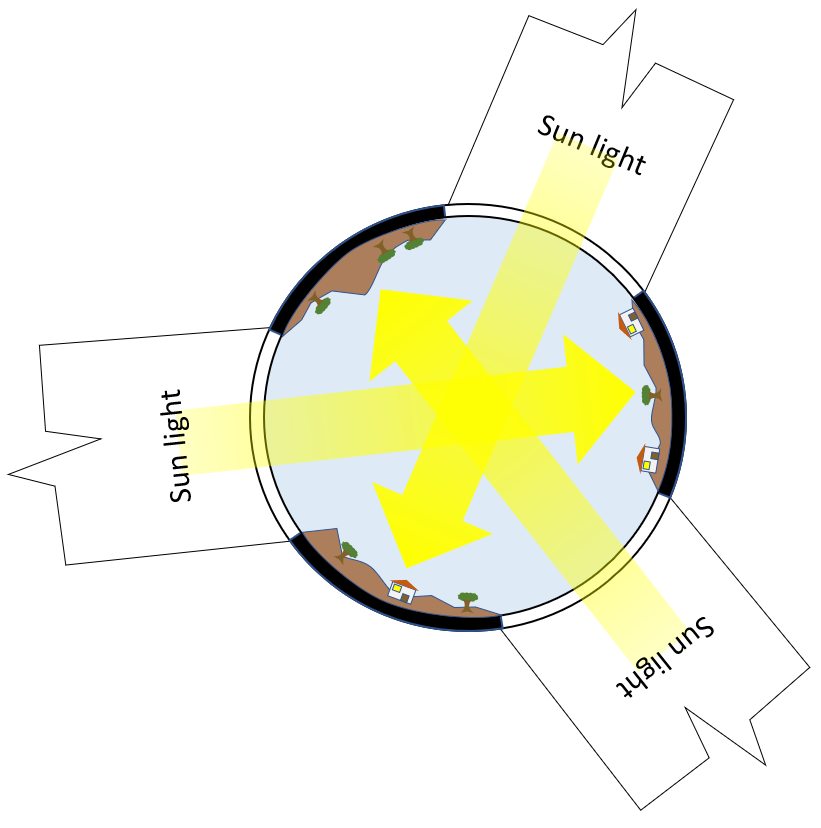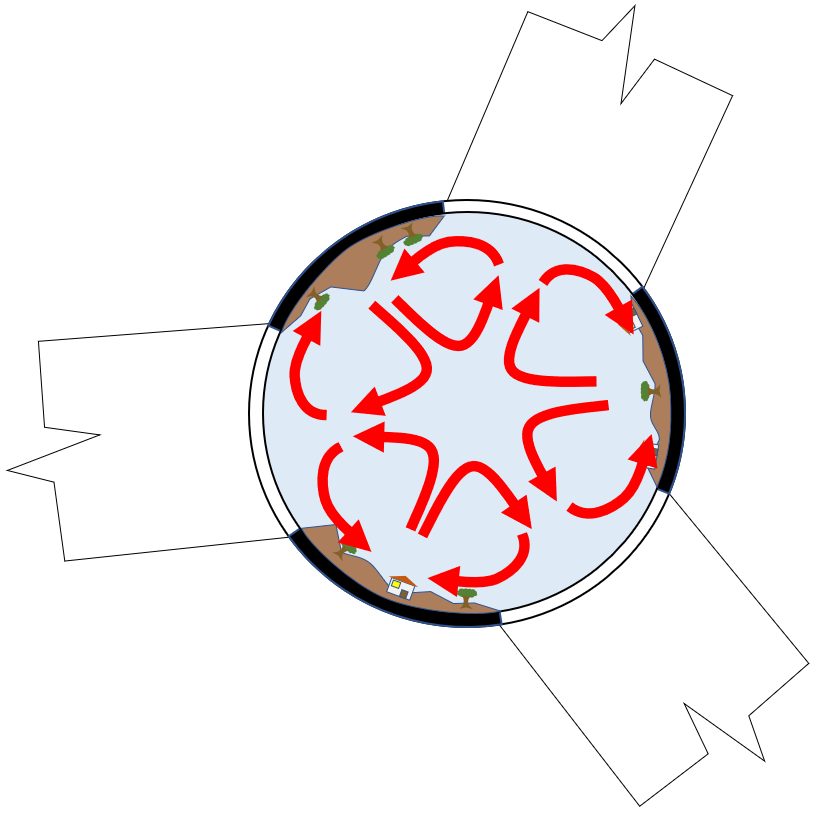Example with an O´Neill cylinder
Because this is a question science based, let´s take a standard O´Neill cylinder. This was a space settlement design proposed by American physicist Gerard K. O'Neill in his 1976 book "The High Frontier: Human Colonies in Space". You can find more information here:
https://en.wikipedia.org/wiki/O%27Neill_cylinder
This design is a cylinder with six stripes along. 3 of them for settlement (land) and 3 of them as windows. Each of the windows has a movable mirror that simulates the day-night cycle. There is plenty of documentation about this concept. In this link you can find a nice diagram (I am also including the image): https://www.artstation.com/artwork/28NNB

And this is how it may look from the inside:

That space colony, viewed from the top of the cylinder will look like this:

And the sun will enter into the space colony this way (remember the mirrors open and close to simulate day and night):

Now here comes the answer to the wind question:
The 3 land stripes will be heated by the direct sunlight, and the 3 glass windows will be cold (just like the glass window in your house when you touch it on a very cold day. Space is quite cold when not in the sunlight, and the windows must be transparent so the sun can enter. Therefore, the windows will be cold and the land will be hot. That creates the first convection circuit (the first winds in your cylinder):

However, the cylinder has to rotate to generate gravity. And the wind particles (as mentioned above in previous answers) will be rotating faster in the positions away from the center of the cylinder, and motionless in the axis along the center of the cylinder. So the loops of the wind currents will suffer a slight deformation as depicted below. Note the additional effect of the 3 mirrors in the center of the cylinder: the 3 mirrors will be heating directly the air in the central axis. So, adding this to the convection currents, will result in a region of motionless hot air in the center axis of the cylinder.
 Finally, please remember (and here comes the disclaimer) no one has ever built anything like this (well, not in our Solar System). So we really can´t be completely sure about the winds or anything weather-related inside a colony like that (we can´t even predict completely our own weather here on Earth).
Finally, please remember (and here comes the disclaimer) no one has ever built anything like this (well, not in our Solar System). So we really can´t be completely sure about the winds or anything weather-related inside a colony like that (we can´t even predict completely our own weather here on Earth).
